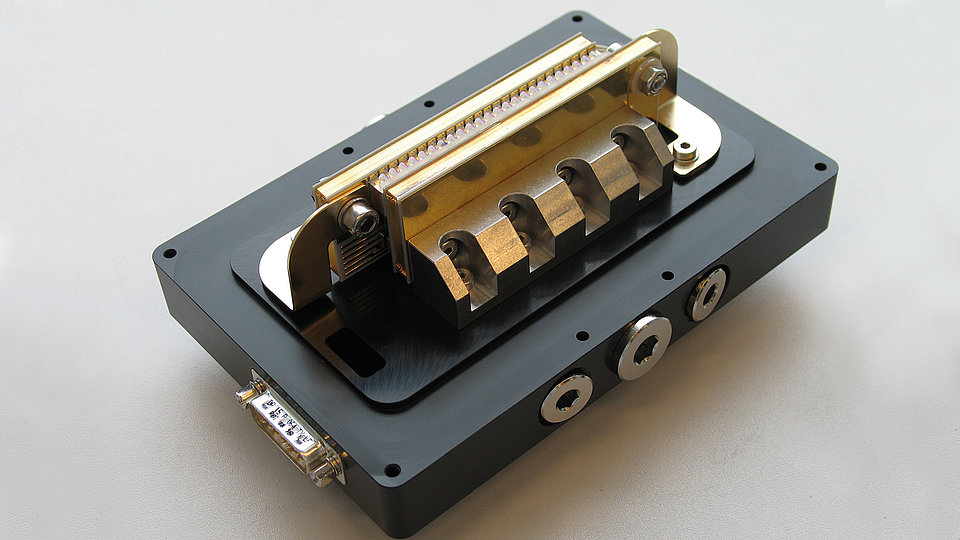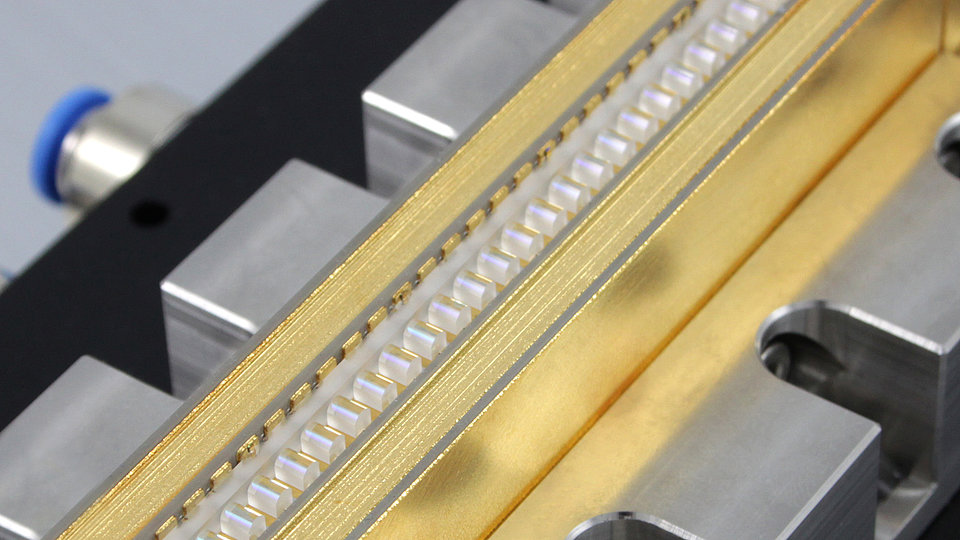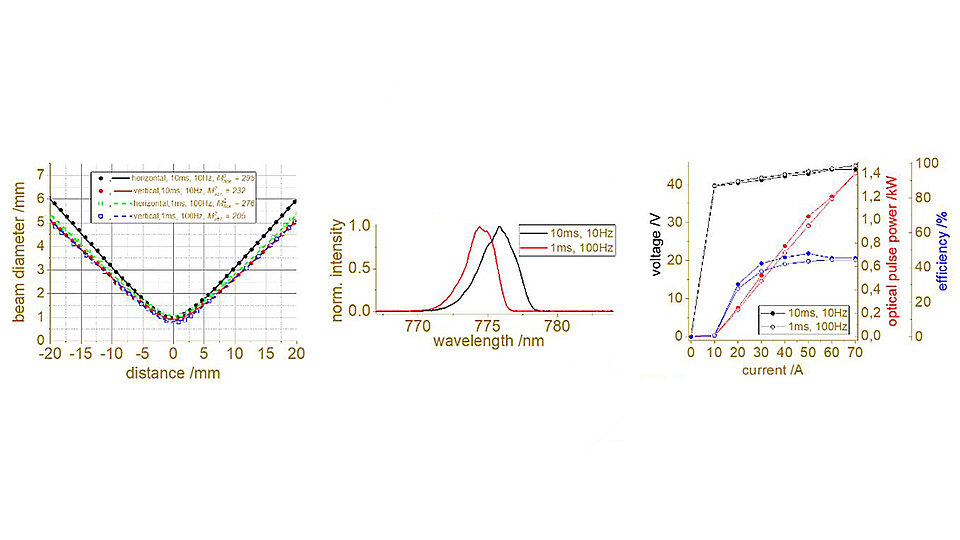First 1.4 kW diode laser pump module emitting at 780 nm for high duty cycle pulsed MIR lasers
Fig. 1: Fully assembled, vertical fast axis collimated (FAC) and application-ready 1.4 kW class stack module.
Fig. 2: Magnified view of individually FAC lenses. Common slow-axis collimation is possible, but not shown.
High-energy class pulsed mid-infra-red (MIR) lasers are a scientific field of growing interest due to their importance for applications in material processing (plastics), basic research (particle acceleration), spectroscopy (pollution), and medicine (radiotherapy). These solid-state lasers require highly efficient, high-power diode laser pump sources. In 2020, FBH scientists made important progress in addressing the demanding requirements for such pump lasers. Specifically, the FBH developed best-in-class pump modules that can for the first time emit 1.4 kW at a wavelength of 780 nm with high pulse repetition rate f = 10 Hz (100 Hz) at high duty cycles (dc = 10 %). The full fabrication chain for these modules is in-house at the FBH, from semiconductor design to characterization, aging and validation of the stacks.
The module utilizes GaAs-based single emitters (SE) that were processed into wide-aperture (1200 µm) diode lasers, each operating with an optical output power Popt = 60 W. The SE are first soldered in a sandwich-like configuration, then twenty-four of these SE devices are soldered on top of each other forming a stack. Finally, they were soldered on each side (along their resonator length) between large channel water coolers to complete the stack module (Fig. 1). The novel packaging configuration has a thermal impedance that is at least 5 times lower than commercial alternatives, without need for the cost and reliability hazard of microchannel coolers. The modules SEs are individually fast axis collimated (FAC) with a residual vertical divergence per SE of 2…3 mrad (Fig. 2).
The performance of a stack module with FACs, namely the voltage U, the optical power P and the conversion efficiency η measured as a function of current I for two pulse regimes (10 ms, 10 Hz and 1 ms, 100 Hz) is shown in Fig. 3. Operational in-pulse power is 1.4 kW at 10 % duty cycle operation, independent of the pulse width (1…10 ms), with conversion efficiency ~ 50 %. Emission wavelength is close to 780 nm, as needed for pumping of thulium-doped YAG crystals (Fig. 3 (center)). The beam quality of the stack module is quantified using the beam propagation ratio M2, determined with a caustic measurement in horizontal and vertical direction (Fig. 3 (bottom)). Here, M2 is determined using values for beam diameter measured at 95 % power content at max. operating power (1.4 kW). The beam is close to symmetric, with M2 < 300 along both vertical and horizontal axes, which enables efficient beam shaping using standard bulk optic elements.
These high-duty cycle and high-brightness pump stack modules are promising components for future pulsed MIR systems. They can easily be combined with further stack modules for power scaling, either interleaved and polarization beam combined or as free-space pumps. Moreover, they can be integrated into a fiber-coupled module. The epitaxy design and semiconductor layout can also be adapted to address other wavelengths and therefore be utilized to pump a wide range of gain materials.
Most recent results were presented at the ASSL virtual conference [1] and have been submitted to Optics Express (ASSL special edition).
Publication
[1] M. Hübner, M. Wilkens, B. Eppich, A. Maaßdorf, D. Martin, A. Ginolas, P.S. Basler, P. Crump, “Kilowatt-class, High Duty Cycle, Passively Side-cooled 780 nm Diode Laser Stacks as Pumps for Pulsed MIR Lasers”, OSA Laser Congress 2020 (Advanced Solid State Lasers ASSL), Virtual Event, Oct. 13-16, p. JTh2A.26 (2020).


